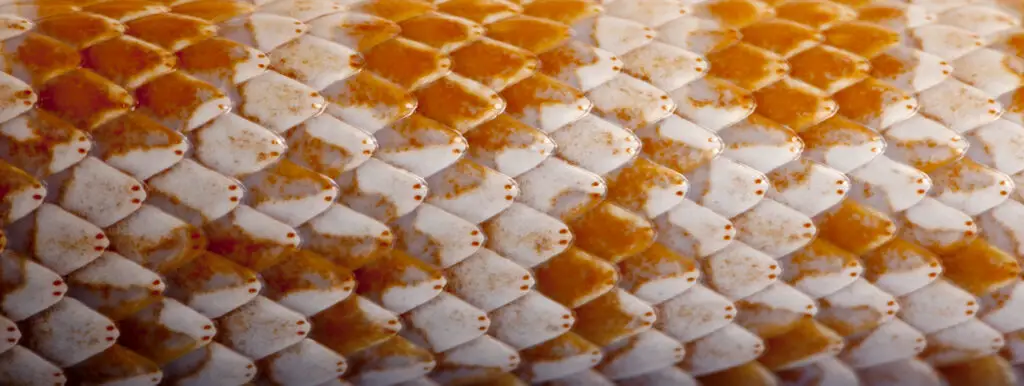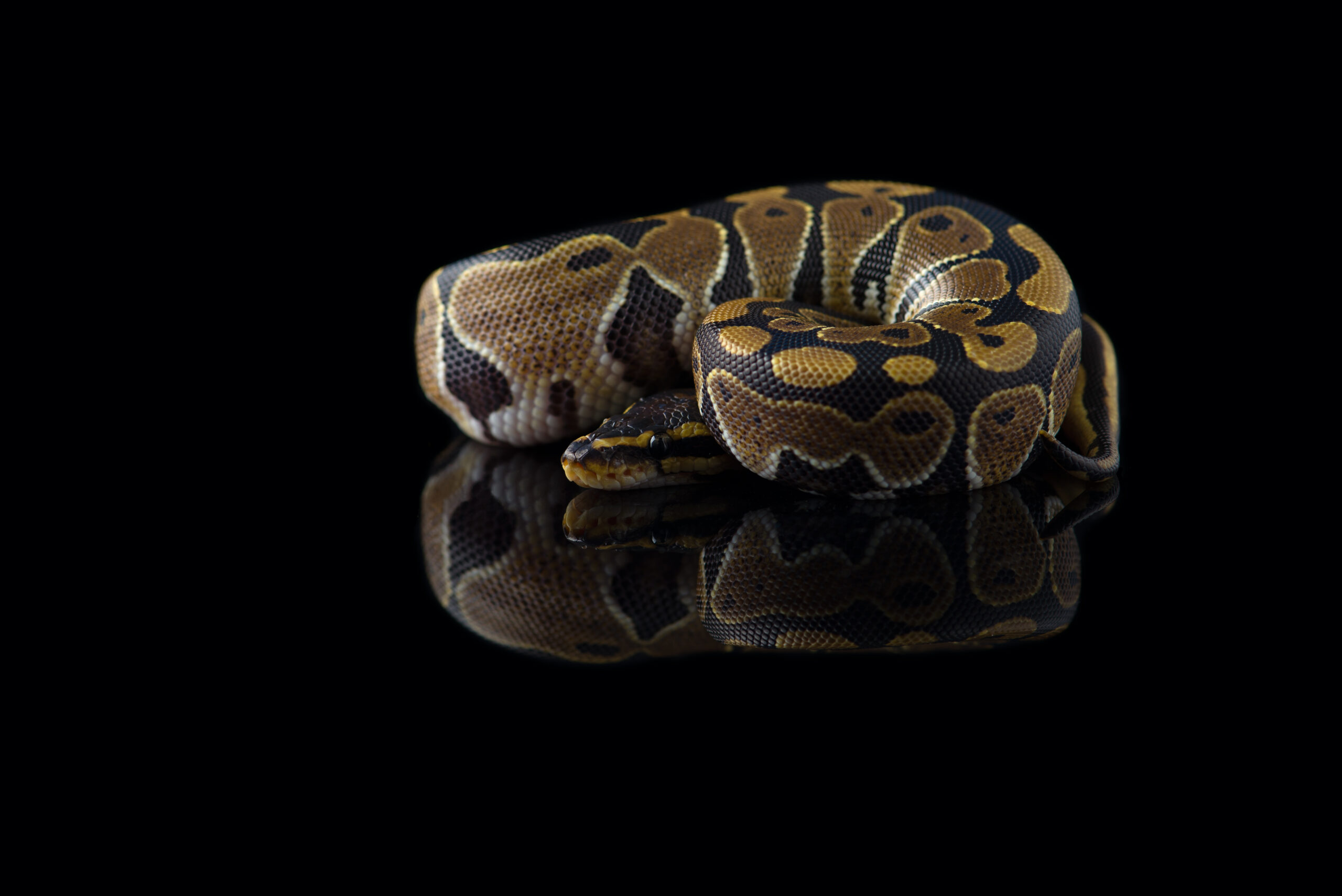Welcome to the wild world of snake myths, where misinformation slithers through our understanding and coils around our perceptions. One common, slippery myth we’re shedding light on today is the belief that snakes are slimy creatures.
Contrary to popular opinion, snakes aren’t damp or mucous-covered beasts waiting to slide into your nightmares. In fact, they possess a unique skin texture that makes them quite different from their slimy amphibious counterparts like salamanders or fish.
Key Takeaways
- Snakes are not slimy creatures, but instead, have a dry and smooth texture due to their unique scales made from keratin.
- The myth that snakes are slimy may have developed from confusion with other cold-blooded creatures like amphibians, as well as humans’ natural aversion to crawling or slithering animals.
- Understanding the role of snake skin in behavior and survival can promote greater appreciation for these fascinating reptiles beyond common misconceptions about their appearance.
The Myth: Snakes Are Slimy
The perceived sliminess of snakes is a common myth among people, which developed due to the confusion between snakes and slimy creatures like salamanders.
Understanding How The Myth Developed
The origins of the myth that snakes are slimy can be traced back to centuries-old misconceptions and cultural beliefs. One possible explanation for this enduring myth is the association between snakes and other cold-blooded creatures like amphibians.
As many amphibians, such as salamanders and frogs, have wet and slippery skin due to their moist habitat, people may have assumed that all reptiles share similar characteristics.
Another factor contributing to the development of this myth lies in historical context. When European immigrants first arrived in North America, they brought with them various tales and folklore about snakes from their native countries, some infused with fear and superstition.
As they encountered numerous species of snakes across the continent – many unfamiliar to them – these stories evolved further into new myths influenced by local encounters with serpents.
Moreover, humans possess an innate aversion to certain creatures that may incite feelings of unease or disgust; often referred to as “creepiness”. Given that almost all cultures around the world harbor negative associations with crawling or slithering animals (snakeskin texture included), it’s not surprising that society would exaggerate these attributes by characterizing snakes as slimy beings.
Reasons For The Misconception
One significant factor fueling the misconception that snakes are slimy is the confusion between reptiles, like snakes, and amphibians, such as salamanders and frogs. Since many amphibians possess wet and slimy skin to maintain moisture in their bodies, people often assume this trait is shared by all creatures with seemingly similar appearances.
Furthermore, some snake species exhibit a glossy or iridescent appearance on their scales due to light reflection.
Another reason behind this myth may stem from people’s natural fear of these creatures. Fear often leads individuals to make incorrect assumptions about what they’re afraid of – in this case, exaggerating the unfavorable qualities of snakes to rationalize their anxiety.
The Truth: Snakes Are Not Slimy
Contrary to popular belief, snakes are not slimy. Their skin is smooth and dry due to the unique texture of their scales.
Explanation Of Snake Scales And Texture
Snakes exhibit a unique and fascinating texture, largely due to the presence of scales on their bodies. These scales are specialized structures made from keratin – the same protein found in our hair and nails.
There are different types of snake scales: ventral, dorsal, subcaudal, and keeled. Ventral scales run along the underside of a snake’s body while dorsal ones cover its back.
Subcaudal scales provide additional support at the tail end of some species. Keeled scales are characterized by a ridge down their centerline; when present in abundance on a snake’s body can give it a rougher or more ridged texture than typical smooth-scaled specimens.
This variation is not only visually striking but also plays an important role in terms of species identification as well as adaptability to diverse habitats such as sandy deserts or forest floors where camouflage becomes imperative for survival.
While handling snakes may be daunting for some individuals due to misconceptions surrounding sliminess or coldness associated with these creatures’ skin textures; they indeed offer quite an interesting tactile experience that challenges common misbeliefs about their nature.

The Role Of Snake Skin In Behavior And Survival
Snake’s skin is an essential element of their behavior and survival. One crucial function of snakeskin is shedding, which allows for growth and the removal of parasites. Snakes also use their scales to move through different terrains, such as grasping onto branches while climbing, or sliding along rocks while swimming.
Moreover, snake’s skin serves as a protective layer against external threats such as predators or extreme temperatures. The unique texture and pattern on each scale provide camouflage in certain environments, allowing them to blend into their surroundings effortlessly.
Additionally, some species use their scaly exterior for communication purposes; for example, male pythons possess small spurs on each side that they use during mating rituals to help grasp onto females better.
Debunking The Slimy Snake Myth
Let’s debunk the myth that snakes are slimy by explaining the science behind snake skin and dispelling common misconceptions about their appearance.
Common Misconceptions About Snakeskin
Many people believe that snake skin is slimy or wet, but this is not true. Here are some common misconceptions about snakeskin:
- Snakeskin is dirty – Contrary to popular belief, snakeskin is actually very clean. It sheds its outer layer regularly to get rid of any germs and dirt.
- Snakeskin is fragile – While it may seem delicate, snakeskin is surprisingly tough and durable. The scales protect the snake from predators and environmental hazards.
- Snakeskin feels strange – Some people may find the texture of snakeskin unusual or even uncomfortable to touch. However, this has nothing to do with slime or wetness.
- All snakes have similar skin – In reality, there are many different types of snake skin textures and patterns depending on the species and habitat.
- Snakes can’t shed their skin properly – This myth suggests that snakes struggle to shed their skin, leaving them with leftover bits that appear slimy or disgusting. However, shedding is a natural process for snakes and they are typically very efficient at it.
Understanding these common myths about snakeskin can help promote a better appreciation for these fascinating creatures and their unique adaptations for survival.
Why Snakes Are Not Slimy
Snakes are not slimy because their skin is covered in scales that give them a smooth and dry texture. These scales act as a protective barrier against the elements, allowing them to move quickly through different environments without getting bogged down or stuck.
Additionally, snakes shed their skin periodically, which helps to remove any debris or dirt that may have accumulated on their surface. This shedding process also allows for new growth and development of the underlying tissue, helping snakes to maintain healthy and vibrant skin throughout their lives.
Conclusion 💭
In conclusion, the myth that snakes are slimy is simply not true. Despite many people associating snakes with a wet and slippery texture, the reality is quite different. These fascinating creatures have dry scales that serve to protect and aid their survival in their various habitats.
While there are certainly some misconceptions regarding these often-misunderstood reptiles, knowing the truth about their unique characteristics can help dispel myths and promote greater understanding of these important members of our ecosystem.
FAQs:
Are snakes actually slimy to the touch?
No, contrary to popular belief, snakes are not slimy animals. Their skin is actually dry and typically feels smooth or slightly textured.
Why do people think that snakes are slimy?
This myth likely stems from the fact that many amphibians, such as frogs and salamanders, have moist skin due to their need for water absorption through their skin. Snakes may occasionally appear wet due to excess moisture on their scales but they are not inherently slimy creatures.
What does snake skin feel like?
Snake skin can vary depending on the type of species, but generally, it feels smooth and dry with a texture similar to leather or plastic.
How does snake oil fit into this myth about slime?
The term “snake oil” originated from a practice in 19th century America where salesmen would travel around selling various potions and tonics made from animal fat, including snake fat which was believed to have healing properties.
Historically speaking – while there may be medicinal benefits associated with certain substances found within animal-based products today (e.g., omega-3 fatty acids found in fish oils), most modern-day experts agree these claims regarding “therapeutic qualities” related snake oil were fraudulent in nature as this form of marketing typically preyed upon vulnerable audiences without evidence regarding safety/efficacy.




